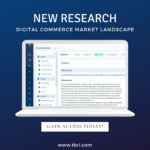SAP use case reveals big things for PwC
Started with a simple SAP use case
In early 2022 PwC shared a few use cases on its website. One in particular, A mid-cycle SAP upgrade creates efficiency and unlocks strategy for a tech company, drew TBR’s attention, particularly its assertion that “PwC and SAP co-developed a process to allow clients to migrate to SAP’s Group Reporting module at any point in the year.”
While that may sound relatively vanilla and nondescript to some, the possibilities around co-development of software, ownership of the IP, and whether this new process was something PwC could package up with SAP and sell to more of their shared clients piqued TBR’s interest. TBR’s questions led to a discussion in April with PwC’s Chip Sherrill, a partner in the firm’s Consulting practice who worked on the specific engagement. The following reflects both the discussion with Sherrill and TBR’s ongoing analysis of PwC, SAP, and the broader consulting and digital transformation space.
Examining every ecosystem angle
Like any ecosystem play, it’s best to look at the use case through at least three lenses (with a bonus fourth based on TBR’s view of the world): PwC and the client; PwC, the client and SAP; PwC and SAP; and solely PwC.
A few things about PwC’s relationship with the client proved critical to understanding how and why this engagement succeeded. First, PwC had been working with the client on other issues, and the client understood the firm’s expertise around finance transformation, tax and governance. Second, and possibly due to that established relationship, PwC understood the client wanted a reporting solution integrated on top of its existing IT and ERP infrastructure, rather than a stand-alone piece of software or bespoke platform. Third, PwC was able to make the business case that it could help solve the client’s problem without breaking budgets or creating future problems.
Adding SAP into the mix, Chip noted that the client had a different vendor on-site assisting with the client’s migration to SAP S/4 HANA, which surprised TBR given the following details from the published use case: “a delay meant five more months of waiting, expenses, scheduling issues with key personnel and a potential loss of executive sponsorship. And, as both PwC and the tech company understood that SAP’s Group Reporting module would eventually become part of a larger move to the entire SAP S/4HANA suite, PwC helped the company look beyond its immediate needs to discover how the current project dovetailed with its long-term digital transformation goals.”
Critically, in TBR’s view, PwC was able to show the client and SAP that in solving the specific problem with an accelerated solution, PwC would be advancing the client’s move to S/4 HANA even though PwC was not responsible for that migration. How? On the specific issues of data integrity and risks, the client considered SAP’s default answers inadequate. Additionally, the client needed fewer months of parallel processing. As a result — and this goes back to knowing the client and being able to map out the business value — PwC proposed an alternative time frame to what SAP suggested and SAP’s standard practice. The client got a “40% reduction in expected implementation time” and a “75% decrease in time required for tax consolidation, compared to before the migration,” according to PwC.
Work with this client gave PwC a proven method for accelerating one aspect of SAP’s vast ERP universe, leading TBR to ask: Who owns the intellectual property, and will PwC go to market with SAP and this new solution?
Fully aware of PwC’s recent evolution of PwC Products & Technology and the firm’s willingness to sell software “as a Service,” TBR anticipated IP ownership would stay fully with PwC. As for co-marketing with SAP, PwC would be bringing the solution to SAP clients, with the potential to expand beyond existing PwC clients in the near term.
Technology as the firm’s fertilizer
At TBR, we’re always starting with the vendor itself, understanding how an individual firm’s or company’s strategies and performance reflect its place in the market and the challenges, opportunities and trends it can expect in the near term.
With this use case and with TBR’s long-running analysis of PwC, three points stood out. First, PwC securing SAP work with a client despite not being the lead vendor on the client’s migration to S/4 HANA underscores the firm’s sustained success in relationship building and expanding its footprint with key accounts. Second, PwC’s The New Equation strategy provided the framework to bring in tax expertise on consulting and technology engagement, allowing the firm to “bring all [of PwC’s] messages together … doing a better job now across the firm explaining what [PwC does] well.” And, third, PwC has better technology capabilities than many of its competitors realize, which will become even better known as this solution scales across the large market for this capability.
TBR does not expect PwC will become a software giant or a competitive threat to SAP and others, but the firm’s persistence in underpinning consulting, tax and even audit engagements with proprietary, tested and well-managed technology will help it grow ahead of peers in the next few years.



